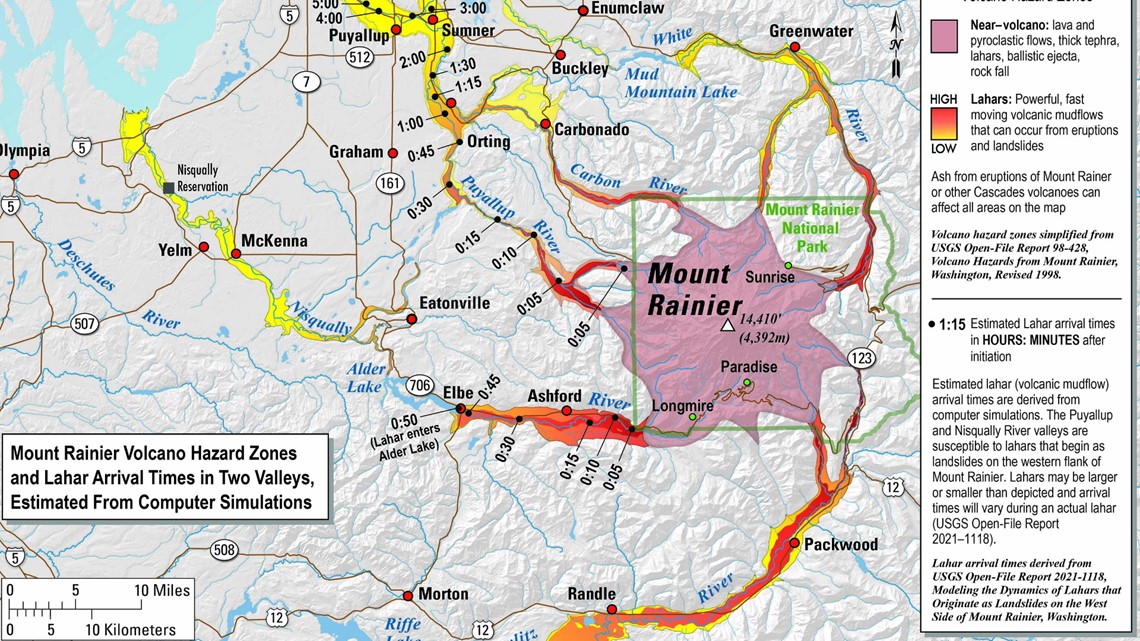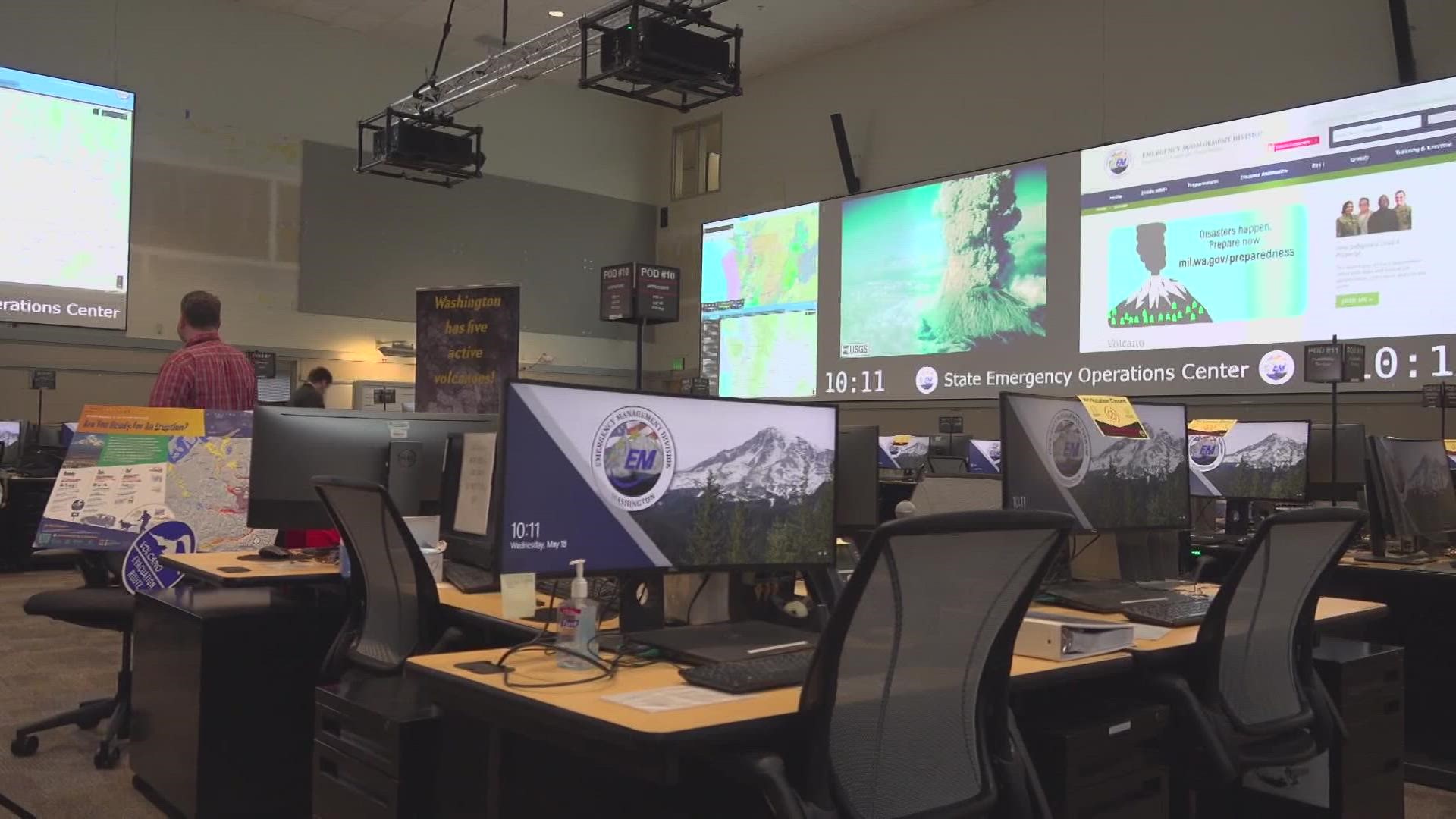SKAMANIA COUNTY, Wash. — May 18, 2022, marked 42 years since the deadly eruption of Mouth St. Helens that killed 57 people and sent waves of ash across Washington state.
Along with changing lives, it changed the face of scientific knowledge about volcanoes, prompted new monitoring techniques and sparked efforts to make sure communities across the state are prepared for potential eruptions or lahars.
Emergency Management Division (EMD) Earthquake/Volcano Program Coordinator Brian Terbush said it's critical for Washington residents to learn about whether they live in hazard zones, and to take measures necessary to prepare. That includes learning evacuation routes, packing an emergency bag and signing up for alerts.
Recently, the United States Geological Survey (USGS) published a new report that included computer simulations of possible lahar arrival times and flow depths to help with the development of alert systems and evacuation routes.
Derived from an Indonesian term, a lahar is a hot or cold mixture of water and rock fragments that run down the slopes of a volcano and can enter river valleys - they start off small, but grow as they move downslope.
The study focused on the west flank of Mount Rainier, which previous researchers found was the most landslide-prone area of the volcano. Simulations used in the study provided examples of how lahars of various sizes flow, and included information about depth, speed and range of lahar movement in the valleys of the Puyallup and Nisqually rivers.


In 2015, the USGS found that more than 90,000 people live in Mount Rainier's lahar zones. Additionally, 50,000 people are employed with about 3,800 businesses in those areas.
The EMD teams up with the U.S. Geological Survey Cascades Volcano Observatory for Volcano Awareness Month. They'll hold a webinar on May 25 where scientists and preparedness experts will discuss how volcano monitoring has changed over the years, the status of Washington's Cascade volcanoes, the best ways to sign up for alerts and other related topics.
You can learn more about how to attend and other events commemorating the month by clicking here.

